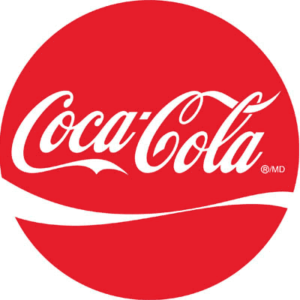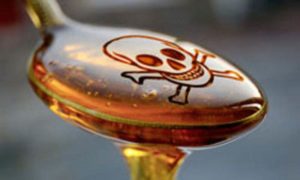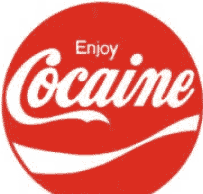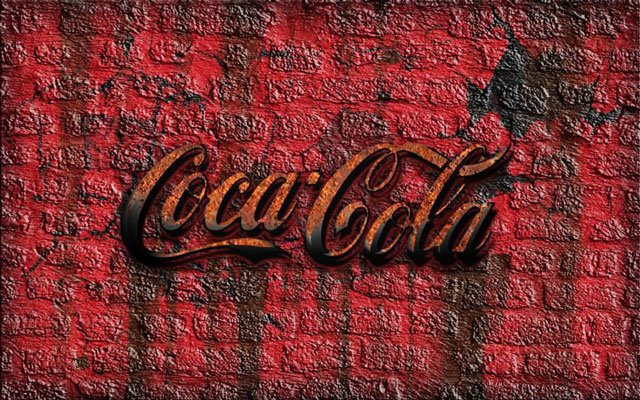Coke Conspiracies

The Coca-Cola symbol is perhaps the most well known of Capitalism, along with Starbucks and McDonalds. Coca-Cola, or Coke, is manufactured by the Coca-Cola Company in Georgia, America. It was originally created as a medicine and evolved to become the world’s most popular carbonated soft drink. The two main ingredients are kola nuts and coca leaves. The exact recipe remains a trade secret. The Coca-Cola Company sells the concentrate to bottlers in the U.S.A., who then add water and sweeteners before selling it to retailers. In 2014 Coke was sold in over two hundred countries worldwide.
Coca-Cola and Science

In 2015 Coke started backing a non-profit organization called the Global Energy Balance Network. This organization promotes the idea that Americans focus too much on what they eat and drink and should be paying more attention to exercise. This can be stated for exactly what it is. Coca-Cola are trying to deflect attention away from the role their product obviously plays in obesity and it’s related diseases. The scientists associated with the organization stated that Coca-Cola had no say in the message given out to the public and had been transparent in their funding right from the start. This was later found to be false. The group’s website also omitted mention of Coke’s backing until Dr. Yoni Freedhoff, an obesity expert at the University of Ottawa, wrote to the organization to inquire about its funding. Dr. Blair said this was an oversight that had been quickly corrected.
“As soon as we discovered that we didn’t have not only Coca-Cola but other funding sources on the website, we put it on there… Does that make us totally corrupt in everything we do?”
There us nothing new to see here, just a Corporation funding an organization where their interests happen to align, as Coke is coming under increasing pressure as the public become more aware of the dangers of sugary foods and High Fructose Corn Syrup (“HFCS”) in particular. In the last twenty years, the consumption of sugary drinks by American citizens has gone down by twenty-five percent. The influence that major food corporations have on apparently neutral health organizations is well documented, with strange funding arrangements and even reports of dietitians being bribed in order to present unhealthy snacks in a healthy way. Coca-Cola are now going even further, recruiting top scientists to promote their product for them.
Coke: HFCS

The most probable theory about Coke is one involving the now infamous High Fructose Corn Syrup. Holistic experts and the organic health movement, in general, are strongly opposed to HCFS, prevalent in practically all processed foods. The majority of corn now manufactured in the U.S is genetically modified, and this is what is credited with the enormous surplus of corn. As the theory goes, the introduction of HFCS into the food supply was a great way for the corn farmers to make money and is a cheaper alternative for the producers, as well as giving the appearance of being more healthy than conventional sugar.
New Coke Conspiracy
Some claim that “New Coke” was an excellent marketing ploy introduced solely for the purpose of adding an extra ingredient to the recipe: High Fructose Corn Syrup. In the 80s Coke brought out a new flavor of Coke, called “New Coke”. The idea was that Coca-Cola knew that no one would ever like the taste of New Coke. When the old supply of Coke ran out, people started demanding the release of old Coke, known as “Coke Classic”. And they brought it back. While this theory may or may not be true, it is true that HFCS was not an ingredient before the marketing of New Coke and was added as an ingredient when they went back to Coke Classic. It is still possible to get Coke original with sugar instead of HFCS. Corn is not kosher on Passover and the true formula is released for this date, the original formula. In Europe sugar is still used and HFCS is not an ingredient. And HFCS is and was cheaper than cane sugar.
However the reality of claims that the entire marketing campaign was released to introduce HFCS without anyone knowing is much more mundane, and the opposite of what is claimed above. The Coca-Cola Manufacturing Company needed to address the fact that independent tests consistently showed that people preferred the taste of Pepsi, their main rivals, against Coke. In response to this, they formulated New Coke, and independent tests showed that it was significantly preferred to Coca-Cola Classic and Pepsi. This was what was really behind the “ploy”, as before the introduction of New Coke tests showed that American citizens actually preferred Pepsi against Coke Classic. However in a bizarre twist, the public wanted Coke Classic back, because of the automatic tendency that old is always better than new, and Coke Classic formed an integral part of American identity. It was not to stand. The President of Coca-Cola Donald Keough publicly stated that:
“The simple fact is that all the time and money and skill poured into consumer research on the new Coca-Cola could not measure or reveal the deep and abiding emotional attachment to original Coca-Cola felt by so many people . . . “
Interestingly, New Coke (now known as Coke II) has now faded away, highlighting the effect advertising and cultural conditioning have on all aspects of the psyche, the power of mental associations clearly triumphing over actual taste. Usually, with these claims, it is best to simply take the middle path between two extremes. As Keough later stated:
“Some critics will say Coca-Cola made a marketing mistake. Some cynics will say that we planned the whole thing. The truth is we are not that dumb, and we are not that smart.”
A More simple conspiracy
The constituents of Coke are primarily caffeine, salt and sugar. A rather simple theory is that caffeine is a stimulant as well as a diuretic which makes you urinate. The 55 mg of sodium per can makes the consumer thirsty. The sugar is used to hide the taste of the salt. The consumer then wants to keep drinking the product due to dehydration. This could be regarded simply as good business, the company not engaging in anything illegal. People are aware of the dangers of Coke at this late stage, and drinking two gallons of coke a day and blaming the Corporation is simply irresponsible.
Cokaine

There are many theories surrounding Coca-Cola and Cocaine. Some allege that the New Coke marketing campaign was introduced in order to get the last vestiges of Cocaine from the product before the Drug Enforcement Administration cracked down on the Company. Times Magazine did run an article on this idea and it is was endorsed by historian Bartow Elmore. It was done at a time when the Regan administration was running a war on drugs. All credible evidence indicates that the last derivatives of the Coca product was removed from the formula in the twenties.
It is true that the original product, Pemberton’s French Wine Coca, contained cocaethylene, a mixture of cocaine and alcohol. It was not until 1929 that the formula was perfected, and before this time active compounds could be found in the soda. Cocaine was taken out of the formula due to racially promoted fears which may or may not have a basis in fact. The New York Times reported that:
“Anyone with a nickel, black or white, could now drink the cocaine-infused beverage. Middle-class whites worried that soft drinks were contributing to what they saw as exploding cocaine use among African-Americans. Southern newspapers reported that “negro cocaine fiends” were raping white women, the police powerless to stop them.”
While Coke became cocaine free in 1929, it still contains the coca leaf extract. And this is where the heart of the Cocaine conspiracy theory lies. Allegedly Coca-Cola acts as a front for legitimately importing Cocaine into the United States. Apparently, over $21 billion of Cocaine is imported for processing by the Jersey-based Stephan Corporation, with an arrangement with the DEA who are given a cut of the profits. The merchandise is said to be hauled away to Mallinckrodt Missouri for processing. While popular on the web this theory is speculation.
Lawsuits against Coca-Cola
In 2001 a lawsuit was filed against Coca-Cola and two of their bottling companies. The case was brought jointly by The United Steelworkers Union and the International Labor Rights Fund. Eight members of the United Steelworkers Union were assassinated by “death squads” in the plants in Colombia. Coca-Cola said they had no ties to the bottling plants and that they committed no violation of human rights. Coca-Cola were found to have a 28% ownership in the direct owner of the two plants, FEMSA.
The killings are not disputed and did severe damage to the image of Coca-Cola. It cannot be disputed that the massacres of union workers in Columbia happen regularly, and it is the most dangerous place to organize in the world. Infowars, killercoke.org and the Stop Killer Coke campaign do a good job at highlighting how dangerous it is to organize a union in Colombia and how terrible it was for the families of the union victims, including orphaned children and estranged spouses. Horrific as it is, however, there is no definitive link between Coke and the murders. It seems inherently risky for Coca-Cola to purchase the services of the paramilitary in Colombia to go around mass murdering union workers. The question in the court case was whether or not Coca-Cola was responsible for the actions of the bottling plants, and a US federal court found that it was not.
However, the campaign against Coke is not to be taken lightly and has gained consideration traction. Being a symbol of Capitalism may have once been good for generating revenue. Now Coke is targeted as a punching bag for anyone to vent their capitalist anger upon, a symbol of all that is wrong with the world. Colombia Vice President Juan Carlos Galvis has stated that:
If we lose this fight against Coke,
First we will lose our union,
Next we will lose our jobs,
And then we will all lose our lives!
A similar court case ensued in 2010 after trade unions and their families were harassed, raped and murdered in Guatemala in connection with Coca-Cola bottling plants. In Turkey in 2005 over one hundred Coca-Cola workers who unionized had their contracts terminated. While protesting Turkish riot police attacked the protesters who had assembled peacefully. In Mexico, Coca-Cola has been shown to have short changed the Mexican government, fire employees who refuse to carry out illegal activities and cheat Mexican workers out of their money. On top of this, they allegedly negotiated 27 water concessions from the Mexican government, eight of which are for the right to dump toxic waste into the waters, and 19 for the extraction of water from aquifers and rivers, some of which belong to indigenous peoples. In India, suicide rates among farmers are on the rise due to the Coca-Cola related destruction of their livelihoods. The operations of Coca-Cola uses too much underground water which results in a dry surface where crops cannot grow. In El Salvador and China, Coca-Cola is linked to slave labor and child labor. Multiple reporters have claimed that in China, in particular, workers toil in awful conditions for slave wages. While individually these claims may falter, the sheer level of international consistency to the reports of Human Rights abuse at the hands of Coca-Cola bottling plants needs to be investigated. While it is not conclusive that Coca-Cola organizes actual attacks on union workers, it would surely be more appropriate for courts to rule that Coca-Cola is responsible for the actions of its bottling plants. This would ensure that the killings stop whether it is directly responsible or not.
Conclusion
The link between Coca-Cola and Scientific organizations are ominous. The public relies on health advice from independent groups in order to gain information about what to consume, and this could be the start of a dangerous trend. If the public cannot get decent health advice due to Corporate manipulation, then society is in a precarious position.
Coca-Cola is a dangerous organization. Aside from the usual claims involving Illuminati symbolism and Cocaine in the beverage, there is plenty of real worlds actual evidence to encourage caution with the company. Studies have shown links between the consumption of HFCS and the emergence of diabetes and fatty liver disease. It is addictive and not good for the body. The sheer amount of claims by different organizations in different countries, as well as investigative reporters is cause for concern. While there is no conclusive link or findings, to say that Coke have not committed any criminal activity is naive in the extreme given the sheer amount of controversy generated.
Coca-Cola Documentaries
Coca-Cola is a very powerful company and they take their brand image very seriously. That could be the reason there aren’t many professionally shot documentaries; no certainty but it is a possibility.
Coca-Cola: The Real Story Behind the Real Thing
https://www.youtube.com/watch?v=vPjg5lBOcu8
Burp! Pepsi v Coke in the ice cold war (1984)
This one isn’t necessarily about the conspiracies we mentioned, however it is interesting to see the competition between the two giants.
https://www.youtube.com/watch?v=2L0poc-om6c


